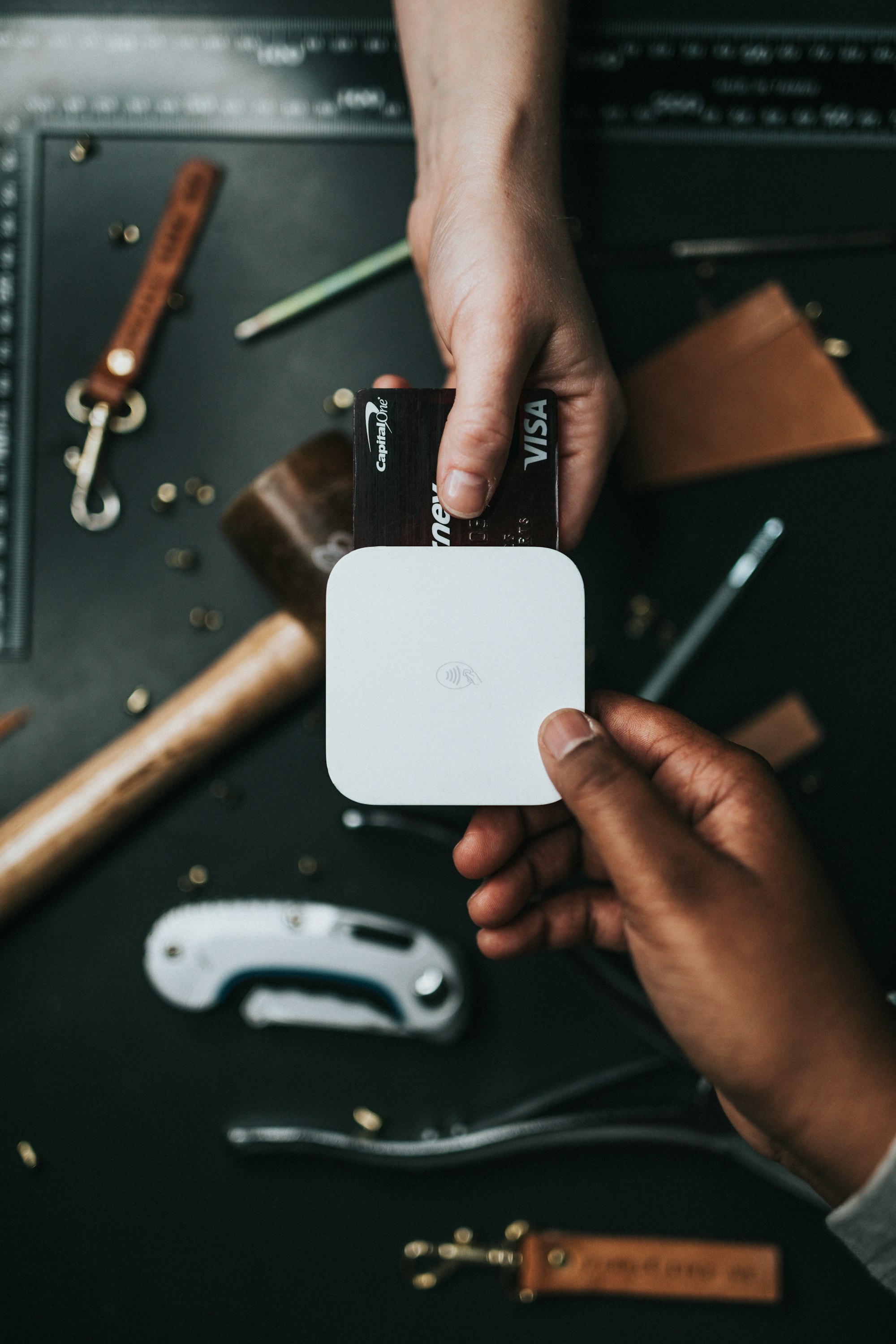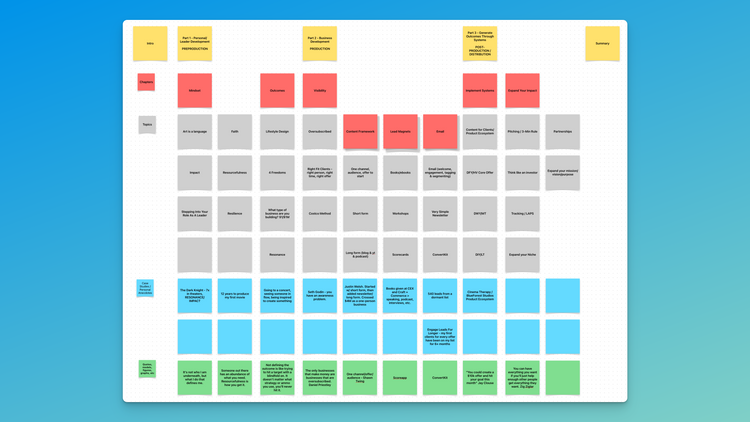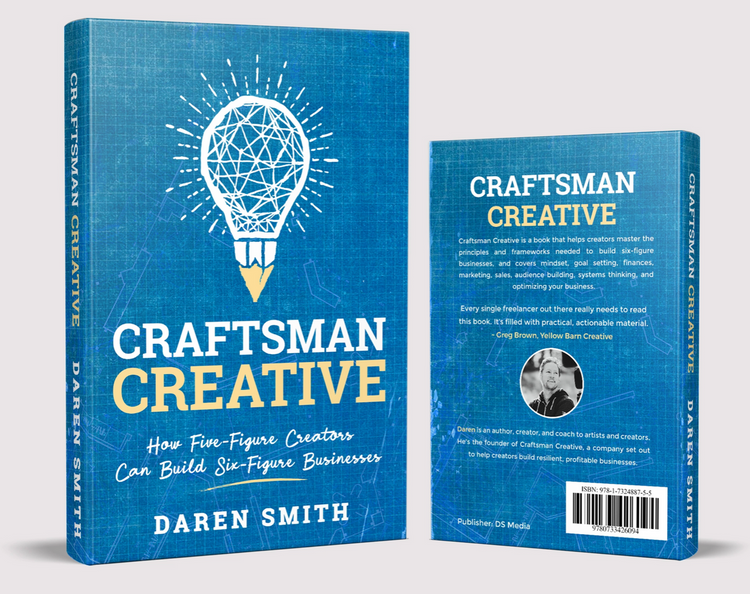Maximize Lifetime Value By Creating Happy Customers

This chapter presents one of the most important sales mindset shifts you can make as a creator.
The goal of selling isn't just to make sales, increase revenue, etc.
If you're not including the goal of creating happy customers, you risk minimizing the long-term value of each customer.
Credit where credit is due, this idea came from the work of André Chaperon and Shawn Twing from Tiny Little Businesses.
Their entire company exists to help creators learn email marketing, traffic generation, and how to create these happy customers.
If you want to read the inspiration for this chapter, I promise you won't be disappointed, as their writing is my favorite on the internet. I can't wait for their email newsletter every week.
Heck, I can't wait for them to sell me something because every time they do they deliver a week's worth of value-packed emails before presenting their offer.
They have mastered the craft of creating happy customers, and it's one of the best things I've learned from them. I'd be holding out on you if I didn't share it with you here.
Create Happy Customers
Here's a quote and statistic that the guys at TLB have shared a number of times over the last few years:
Legendary marketer Dean Jackson has analyzed his customers' extensive data and found that only 15% of people who buy within two years make a purchase in the first 90 days. Everyone else — 85% of people who buy — don't make a purchase until AFTER 90 days. That means there's FOUR TIMES THE OPPORTUNITY waiting for you after three months — if, and only IF, you don't screw it up.
Think of everything we've covered about sales - connecting the journey from marketing to sales, abandoning the funnel and replacing it with the sales journey, creating irresistible offers and a ton of value.
All of it is because of this reality stated in the quote above.
Most people don't buy in the first 90 days, let alone the first contact with an offer.
Yet, so many people today push the sales funnel approach. Dump people in at the top, squeeze as many people through the bottom as possible.
But that approach ignores this reality completely.
You're burning most of the people that you "dump" into that funnel, and they'll never return.
You'll never have the chance to sell to them in 90 days, let alone a year from now, if you turn them off on first contact.
You're creating upset visitors rather than happy customers.
So it's time to flip the script and use a different approach.
Focus, instead, on creating happy customers.
Here are the principles of creating happy customers:
Let them choose how and when to discover your offers.
Remove the funnel, the countdown timer, the urgency of the offer initially. You haven't yet earned their trust, so it just feels icky on first contact.
Those tactics can sometimes work in the future around Black Friday or Cyber Monday, product launches, or other times. But if that's how people are discovering your brand and your offer, it's often more of a turnoff than a reason to buy now.
Instead, provide a ton of value upfront and open the door for people to enter your world by giving you their email address.
This will give you the permission to give them more value over time.
When I launched my courses in the spring of 2020, the very first person to pay full price was a guy that had been on my email list for over four years.
Four years of value! Email newsletters, free email series, webinars, and videos that I shared for four years. That subscriber had the opportunity to go at his own pace and choose when to become a customer because my business was set up to create happy customers, rather than quick-as-possible ones.
Don't Use Email To Just Sell
Too many creators and businesses, especially, use email as a way to deliver promotions to inboxes.
It's a limited view of what that relationship can be.
Can you believe that there are emails that I look forward to receiving every week? Well, there are. Two of them.
The first I already mentioned, from Tiny Little Businesses. The other comes less consistently, but any time Derek Sivers sends an email I know that there's some value on the other end.
Every time Derek announced another book, I bought it. Every time this year that TLB has launched another course, I bought it. They've provided so much value for free, for years, that I know how much value must be in a paid product or service.
You could easily say I'm a happy customer since I own every one of both of these creators' products.
Have a long-term approach to your business
I know that the work I'm doing right now isn't going to pay off next week or next month.
But I also know that when it does start paying off that it won't be for just a week or a month.
This book I'm writing will be a calling card and an entry point for future happy customers for years to come.
The movies that I produce will, hopefully, impact audiences for many years. Generations, if I'm lucky.
When you approach your creative work this way it means that every new creation compounds on the ones you've already created.
It creates a whole library of assets that you own that people can buy on their own timeline.
It's one of the reasons that I don't love the current craze over cohort-based courses. The value is limited to a small group of people for a limited amount of time.
In order to reach more people, you have to show up over and over again as a creator, which limits your freedom and independence. Those assets are only assets during the short period you promote and run the course. After that, since people missed the window, the value is gone.
The alternative is to create a whole bunch of assets that can be purchased by anyone at any time, whether they just discovered you or have been a fan for years.
You treat people differently depending on what your goal is
If your goal is to extract as much money from an audience in as short a period as possible, you are going to treat people like numbers. You won't care about their experience, only about how to get money from their bank account into yours.
You care less about the quality of your product, but about how many you can sell.
You don't care if they don't come back later, because there are a million others you can put that offer in front of next.
This approach feels exhausting to me, not to mention gross and disrespectful.
When you optimize for happy customers, you put more care into your product. You consider how to get those customers to share your work with others, to leave glowing reviews, and to want to connect with you, the creator.
You give them options rather than force them through a funnel.
You provide value indefinitely because that's how you operate and then leave the door open for those fans and subscribers to take the next step and become customers when they feel that they're ready.
Your business completely changes when you change what you're optimizing for.
NEXT CHAPTER >

< PREVIOUS CHAPTER








Member discussion